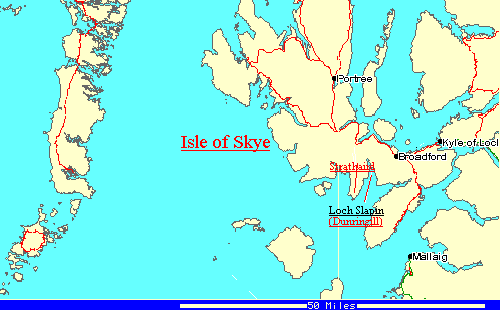An
introduction to "Stormwatch"
In 1978 Ian started writing songs for a new album that
can be considered as the third one in a trilogy about the
relation human and nature. This environmental theme,
portraying a way of life that Ian sees as full of meaning
with a sense of community and respect for nature, was
very prominent on "Songs From The
Wood" and explored further on "Heavy Horses".
In a BBC-documentary, the band band can be seen
rehearsing and performing "Dark Ages", a song
from "Stormwatch" which was released in 1979.
Ian explains how the song is about his idea that humanity
was in the late 1970's entering something akin to the
Dark Ages of several hundred years ago. This is mainly
the result of destruction of the environment. So the
album title comes from Ian's idea that he is watching a
storm coming, that will put mankind into a kind of winter
in which the environment will be destroyed. One could say
that both lyrics and album cover contain a warning for
what is going to happen to the world if modern society
doesn't change it's manic strive for economic growth at
the expense of nature and environment.
The album cover shows Anderson bundled up in coat and
mittens holding a set of binoculars. In the lenses of the
binoculars are images of oil rigs and lightning bolts.
The green and brown imagery of the previous two album
covers has been replaced by blue, gray and black. The
band logo takes the form of a digital readout like that
of an alarm clock. The album presents itself in a very
contemporary vein. Nonetheless it is easy to see it as
the last in a trilogy. It doesn't look to nature or the
past for a better way of life but instead calls for
action in the present to save nature lest humanity suffer
a terrible fate. This is illustrated on the back of the
album cover. It portrays a coastal area with oil
refineries on land and oil rigs off in the sea. The whole
area is covered with massive amounts of snow while a
gigantic polar bear rampages along the coast. In the
clear sky are several birds, the constellation of Orion
(the name of one of the songs) and an angel, presumably
representing Gabriel who has come to blow his horn
signalling the Apocalypse. (Unfortunately, the angel's
face is obscured by a bar code.)

Ian Anderson and
Barriemore Barlow during the Stormwatch tour. You will
find more on George Cassuto's Jethro Tull Stormwatch Tour
Pics Page (Thanks
George for lending me this one).
Annotations
North
Sea Oil
- The album begins with "North Sea Oil",
which describes the greed which fuels the
petroleum industry: "Riggers rig and diggers dig
their shallow grave, but we'll be saved and what
we crave is North Sea Oil"
and the dangers of pollution for the environment.
However most North Sea oil is transported by
pipeline, with few pollution incidents. The only
significant spill in the last 30 years of
petroleum extraction occurred over 10 years after
the song was written. In terms of affecting the
Scottish environment, it's mainly been in
industrialising rural areas. The Shetland
Isles are almost unspoilt, apart from the massive
oil refinery at Sullem Voe. Oil rigs were
constructed in the Scottish lochs and bays for
years, ruining the views. The deep waters around
Skye were used this way (see 'Broadford Bazaar'),
which might have been Ian's inspiration. A
significant point in understanding the song is
the way the British government has made use of
the oilfield resource. They could have promoted
slower, steady extraction, covering Britain's
energy costs and trade balance for decades, maybe
longer. Instead, they went for all-out,
intense development with immediate profits -
which won't last. I suspect Ian disapproves. I
have no political bias in saying that;
governments of all parties have behaved the same
way.
* Neil R. Thomason
Orion
- In this song Ian seems to plea for help from the
heavens: "Orion, light your lights:
come guard the open spaces from the black horizon
to the pillow where I lie." This
reminds of the appeal in "Weathercock"
from the Heavy Horses album: "Good morning weathercock:
make this day bright. Put us in touch with your
fair winds. (...) Point the way to better days we
can share with you". Even though
the album is, as Anderson himself described it,
"more socially oriŽntated", nature is
still used to great effect.
Home
Dark
Ages
Warm
Sporran
- The first half of the album ends with an
instrumental piece. It would seem that Anderson
is seeking shelter from the storm about to begin.
Something
Is On The Move
Old
Ghosts
Dun
Ringill
- There is a place called Dunringill.
It lies on the shores of Loch Slapin, Isle of
Skye, which form part of the Strathaird estate
once owned by Ian Anderson - now owned by the
John Muir Trust which is a conservation body. The
ruins of Castle Ringill, 900 years ago the seat
of the Clan Fingon, are just a few hundred yards
away from the house Anderson once lived in. An
attractive and secluded spot.
* Graeme Robertson, Habitat
Scotland, Hazelmount, Heron Place, Portree, Isle
of Skye, IV51 9EU, Scotland UK, url: http://www.merger.demon.co.uk/sitc/

(* Maps:
http://uk.multimap.com/)
- "We'll wait in stone circles"
. Two examples of stone circles, built in the
neolithic era. Both are situated on the Isle of
Lewis, Outer Hebrides near Stornoway. There a
many of these stone circles on the British and
Irish isles. Scientists have developed several
theories about these monuments considering them
as places for worship and ceremony, burial and
devotion, calendars etc.These photographs were
made by © Diego Meozzi ( dmeozzi@micronet.it
).
* Jan Voorbij
Flying
Dutchman
Elegy
- The album ends with a David Palmer instrumental,
"Elegy". Here ends our trilogy. The
appropriation of images from folklore and nature,
which were present before, come to a climax here.
The conflict between urban and rural, past and
present is made clear. And Ian Anderson predicts
dire consequences if our present course of greed
and environmental destruction is continued.
- Some comments on 'Elegy' - the song, written by
David Palmer, is actually about the death of his
father. It even has lyrics, which Palmer himself
sung on a album he recorded sometime back in the
earlier 90's. These notes were taken from a
"A New Day" from some time back. But I
feel that most fans, including myself, have
associated this song with the passing of John.
Also, John Glascock fell very ill during the
recording of Stormwatch but he did not die until
three weeks after the albums release, which is
why no mention of his death makes it to the
cover. Someone on the Tull newsgroup several
months/years back made notes of the albums
release date and John Glascock's date of death.
* Matt Willis
|
![]()
Back to "Stormwatch"
lyrics page
![]()
![]()
![]()
Back to "Stormwatch"
lyrics page
![]()
![]()